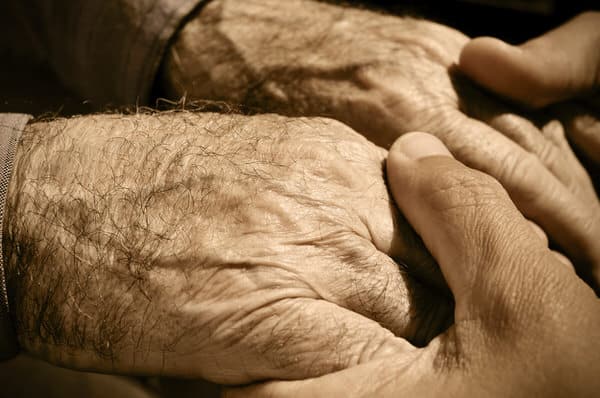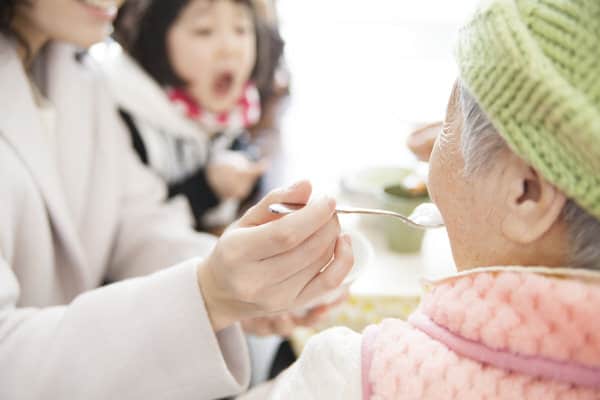The most prevalent caregiver type across the globe is the family caregiver. Even in cultures lacking a tradition where children are obligated to care for their parents, family caregivers abound. As former First Lady Rosalyn Carter said:
There are four kinds of people in the world: Those who have been caregivers; those who currently are caregivers; those who will be caregivers; and those who will need caregivers.

Family caregiver stats
The AARP’s 2015 report, Caregiving in the US, says over 16% of Americans provide unpaid care for an adult. There are almost 40 million family caregivers in the US. Over 34 million provide care for someone age 50 or older. Basic statistics offer a snapshot of the typical family caregiver:
- 60% female, 40% male
- 82% are taking care of one person, usually a relative
- 49% for a parent or parent-in-law
- 10% for a spouse
- Average age is 49, but 7% are age 75 or older
- Average caregiver has been in the role for 4 years, but 24% of them have been providing care for 5 or more years
- Family caregiving cuts across racial, ethic and income lines
Millennial family caregivers are increasing
Even though the average family caregiver is in midlife, millennial caregivers are on the rise. Their baby boomer parents are entering older age, and they’re suffering more chronic diseases like dementia. The AARP estimates that over 10 million family caregivers in the US are millennials:
- 63% female, 47% male
- 43% are caring for a parent, 22% for a grandparent, 16% for a friend or neighbor
- 73% are employed (millennials are the most likely of any caregiver generation to be employed)
- 1 in 3 supports a person with a mental or emotional health problem
- Provide 21 hours per week of care on average
Of concern is the fact that millennials tend to keep their caregiving roles more private than older generations. Only 19% of millennials discuss their caregiving duties with coworkers, compared with 47% of older family caregivers. And less than half (46%) mention such duties to their supervisors. Which may be a reason that more than half (54%) say their caregiving duties have had a negative impact on their career prospects.
Consistent with the US’s increasing diversity, millennial caregivers and care recipients are more diverse than older ones:
- 44% White
- 27% Hispanic/Latino
- 18% African American/Black
- 8% Asian American and Pacific Islander
- 3% Other

Family caregiver duties
Some family caregivers provide nearly all aspects of their loved one’s home care. Others manage a complex web of paid and unpaid help.
Family caregivers provide medical care
Forty-six percent of family caregivers report that they provide complex care, assisting with Activities of Daily Living (ADLs) like transferring from bed to chair, dressing, bathing and toileting.
Of this group, 43% feel they have to provide such care because no one else can/will do it or because insurance won’t pay for a personal caregiver. In addition, 12% say their care recipient pressures them to do such tasks. (“Mom won’t let anyone else help her get dressed.”)
Day-in, day-out physical care of a person with a chronic condition is taxing, especially if your relative lives with you. You never get a break from caregiving. This can lead to physical, emotional and financial stress.

Caregiving isn’t only direct medical care
Even if you’re not the person who changes an elderly parent’s diaper, you still might be a caregiver. Typical family caregiver duties include:
- Household tasks
- shopping
- food prep
- housekeeping
- laundry
- transportation
- Personal hygiene, etc.
- bathing
- dressing
- grooming
- toileting
- feeding
- giving medications
- More complex tasks
- paying bills and managing finances
- arranging for household repairs
- scheduling and attending doctor appointments
- communicating with the medical team
- researching treatment options
- advocating for the patient
Economic value of family caregiving
The AARP’s 2015 update to their report Valuing the Invaluable says that the United States’ 40 million family caregivers provide 37 billion hours of care to
For perspective, the value of unpaid family care exceeded that of paid care and Medicaid spending in the same year. Put another way, in 2015 the $470 billion worth of unpaid care nearly equalled Walmart’s total sales that year.

Financial strain
Family caregiving responsibilities affect both employees and their employers, resulting in significant economic impact across the board.
Strain on employees
Wakefield Research’s SCAN Health Plan C Survey among US adults 65+ found that 47% of caregivers experience financial strain due to caregiving responsibilities. Among this group:
- 34% cut back on their own discretionary spending
- 20% use personal savings to provide care
- 8% accrue credit card debt to provide care
- 5% ask for donations or financial support from friends or family
- 2% take out a loan to provide care
Out-of-pocket costs affect millennial caregivers disproportionately. AARP found that unreimbursed caregiving costs varied as a percent of income by generation:
- Millennials 27%
- Gen-X 24%
- Boomers 13%
- Silent Generation 25%
Strain on their bosses
A MetLife study on caregiving cost to U.S. businesses estimated substantial productivity losses due to employee caregiving duties. In 2006, US businesses lost a total of $33.6 billion, with an average cost for each employee with intense caregiving responsibilities of $2441. These costs include:
- Replacement of employees who leave the workplace
- Absenteeism and partial absenteeism
- Workday interruptions
- Crisis in care resulting in unplanned time away from work
- Supervision e.g. accommodating hour/location modifications
- Getting job done when employee goes on unpaid leave
- Costs associated with employees’ reducing hours from full-time to part-time

Caregiver stress
Most family caregivers have mixed feelings about their roles. A Pew Research Center survey reports that 88% of adults caring for their aging parents find the experience rewarding. Only 32% say it’s stressful. Of note is the fact that people find caregiving both rewarding and stressful at the same time.
Numerous studies document different aspects of caregiver stress, both physical and emotional. For example, 11% of family caregivers report that caregiving has caused their physical health to deteriorate. An estimated 17-35% of family caregivers rate their own health as fair to poor.
Family caregivers of people with dementia face more stress than non-dementia caregivers. The Alzheimer’s Association reports that 49% of family caregivers for someone with dementia say providing help is “highly stressful” compared with 35% of caregivers for people without dementia.
Appreciate family caregivers
Returning to Rosalyn Carter’s words, we all come into contact with family caregiving during our lives. Many of us are caregivers now. And while no one wants to think about it, many of us will need caregivers at some point in the future.
Appreciate yourself and the ways you care for another person in your family. You may be taking on duties you never prepared for or imagined yourself doing. Remember also to appreciate siblings or other relatives who shoulder caregiving duties. The caregiving burden is rarely shared equally, but
It’s hard to be a family caregiver. But it’s also a privilege to participate in what the former First Lady characterized as a circle of care. So take up your place along that circle. Fully aware that the wheel keeps turning.
Images via: Shutterstock, Pixabay
Join my journey through midlife

Subscribe to Jubilant Age and download a free guide to protecting your loved one's money!
Success! Now check your email to confirm your subscription.



